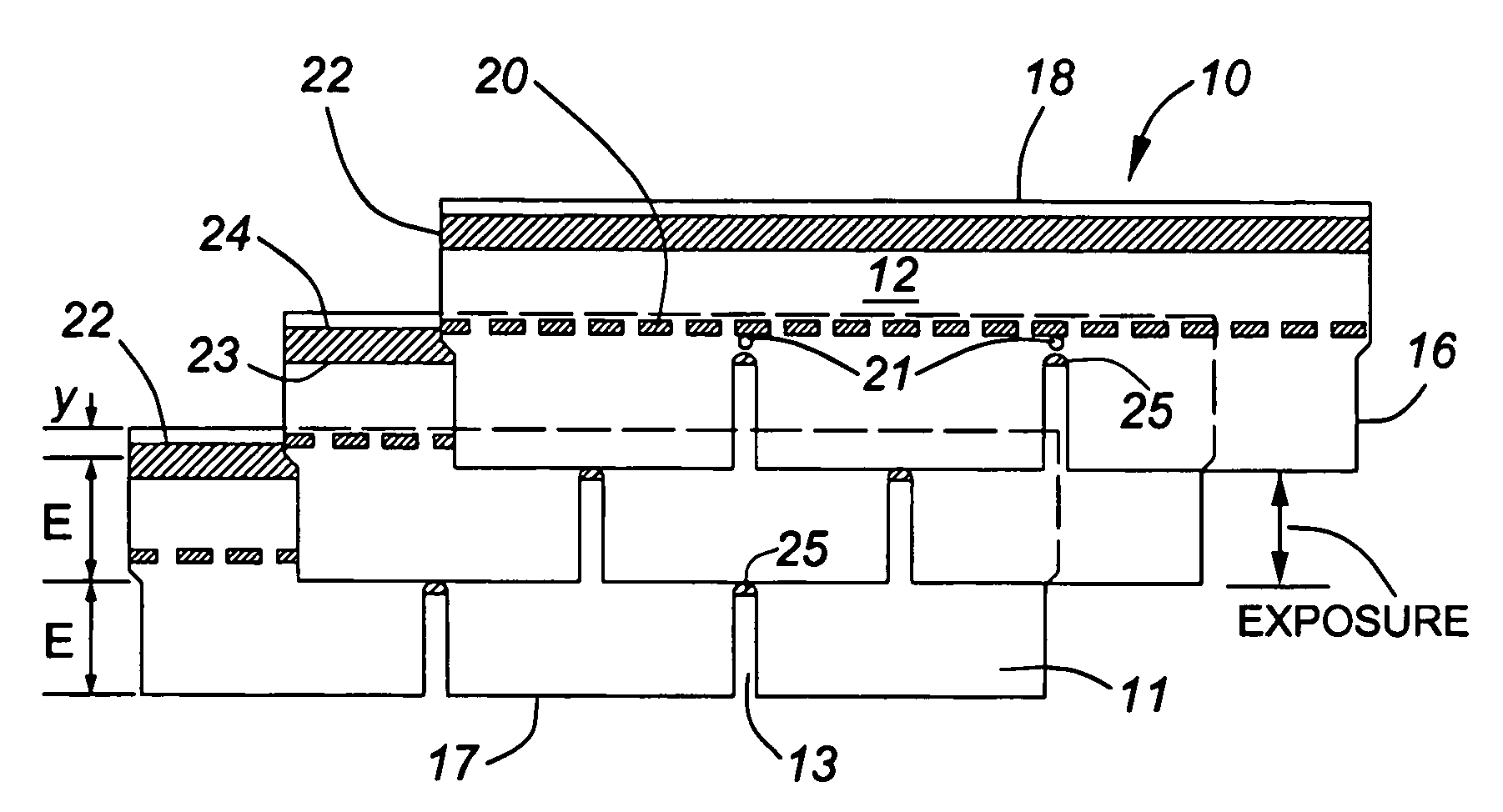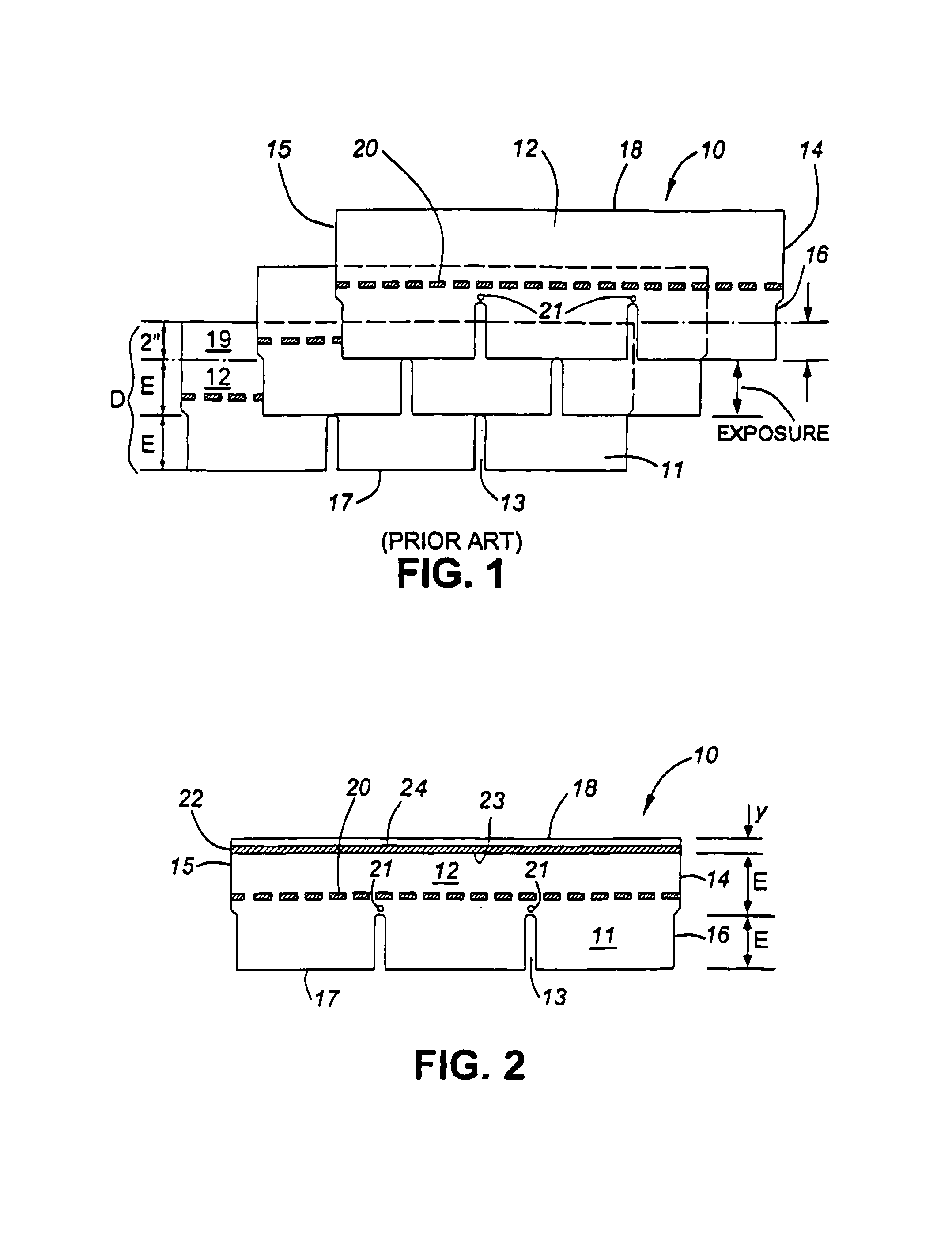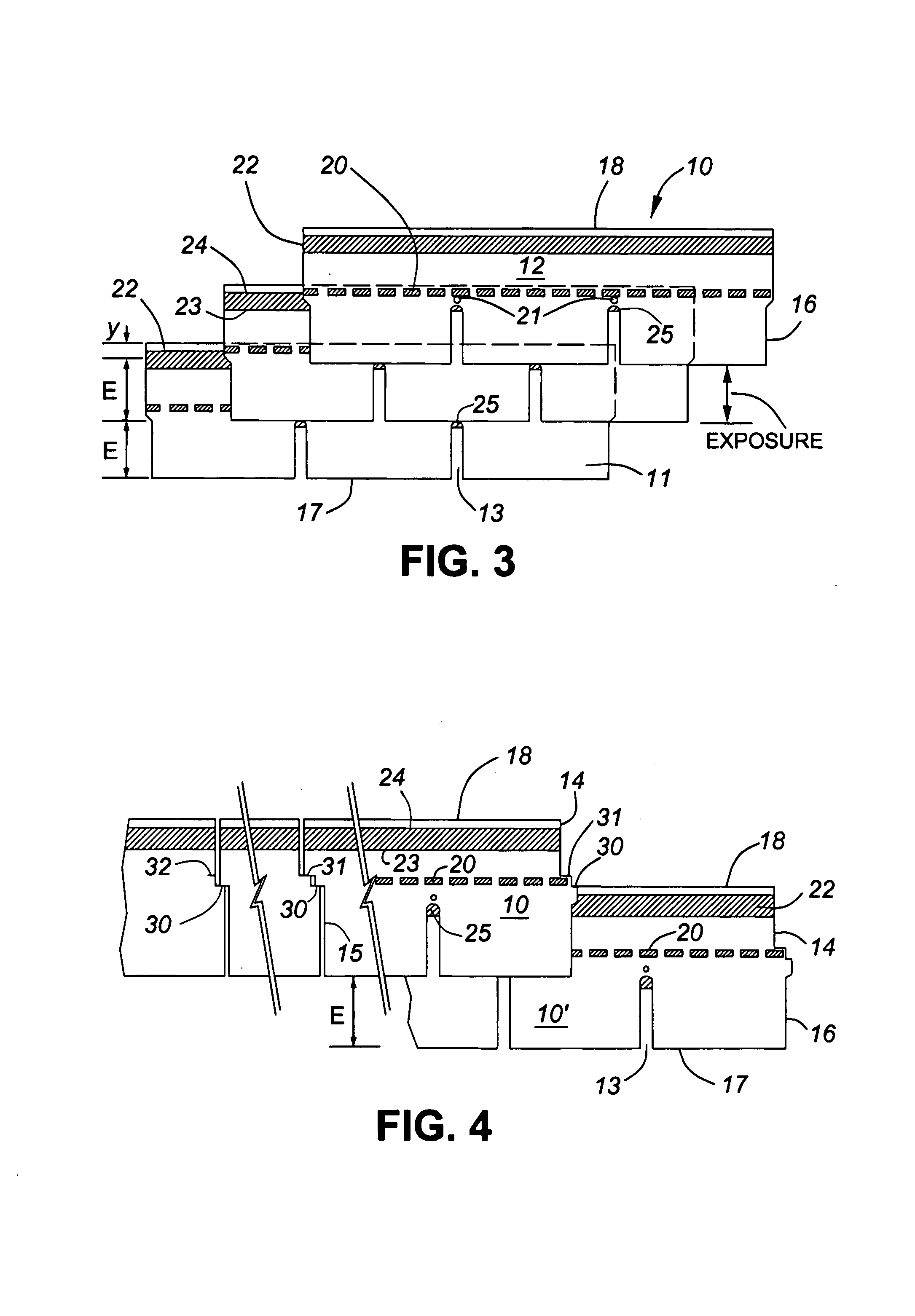Roofing shingle with headlap seal and improved coverage
a technology of roof shingle and seal, which is applied in the field of roof shingle, can solve the problems of leaking onto the roof deck, shingle tab, and underlying shingles having built-in weakness, so as to reduce the width of the shingle of the invention, prevent bleeding over the edge, and reduce the lifting of tabs
- Summary
- Abstract
- Description
- Claims
- Application Information
AI Technical Summary
Benefits of technology
Problems solved by technology
Method used
Image
Examples
example 1
[0038]In the United States and Canada, wind and rain penetration has been the subject matter of numerous building codes. Dade County, in Florida, and the Canadian Construction Materials Centre have established the highest standards, requiring that shingles withstand wind and rain penetration to 110 mph (175 kph). Other organizations, such as ASTM and CSA, merely require that shingles resist wind uplift (stitch failure) up to 60 mph (90 kph).
[0039]In dynamic tests conducted by the applicant, conventional three tab shingles installed conventionally, (5⅝″ exposure with 2″ headlap) with only the tab stitch adhesive, passed the standard ASTM / CSA wind uplift test as no tabs failed under winds of 60 mph (90 kph). Nonetheless, the same three tab shingles experienced rain penetration under a wind and rain loading of 50 mph (80 kph). Only an underlayment would have retarded consequent water damage.
[0040]In contrast, dynamic tests of shingles of the present invention, with increased exposure (...
example 2
[0042]For a shingle having a 5″ exposure (E) by a 36″ length, in order to cover 100 square feet of roof, 80 shingles would be required.
i.e.100÷(5″×36″ / 144)=80
[0043]However, in the present invention, with a sealant band and reduced headlap, the same shingle could increase exposure to 5½″. The number of shingles required to cover 100 square feet of roof would be approximately 73,
i.e. 100÷(5.5″×36″ / 144)=72.73.
[0044]This approach allows the same coverage of roof with some seven fewer shingles (approximately 10%). Conversely, one could choose not to increase the exposure of the shingles, but could reduce the width of the shingle by the same amount of 1″ which would also allow a reduction in raw material consumption. With increased coverage, fewer shingles need be applied and both time and labour costs are reduced. Consequently, there is a clear economic benefit for the manufacturer, roofing applicators (contractors), and ultimately consumers (home owners). This economic benefit is additi...
PUM
 Login to View More
Login to View More Abstract
Description
Claims
Application Information
 Login to View More
Login to View More - R&D
- Intellectual Property
- Life Sciences
- Materials
- Tech Scout
- Unparalleled Data Quality
- Higher Quality Content
- 60% Fewer Hallucinations
Browse by: Latest US Patents, China's latest patents, Technical Efficacy Thesaurus, Application Domain, Technology Topic, Popular Technical Reports.
© 2025 PatSnap. All rights reserved.Legal|Privacy policy|Modern Slavery Act Transparency Statement|Sitemap|About US| Contact US: help@patsnap.com



